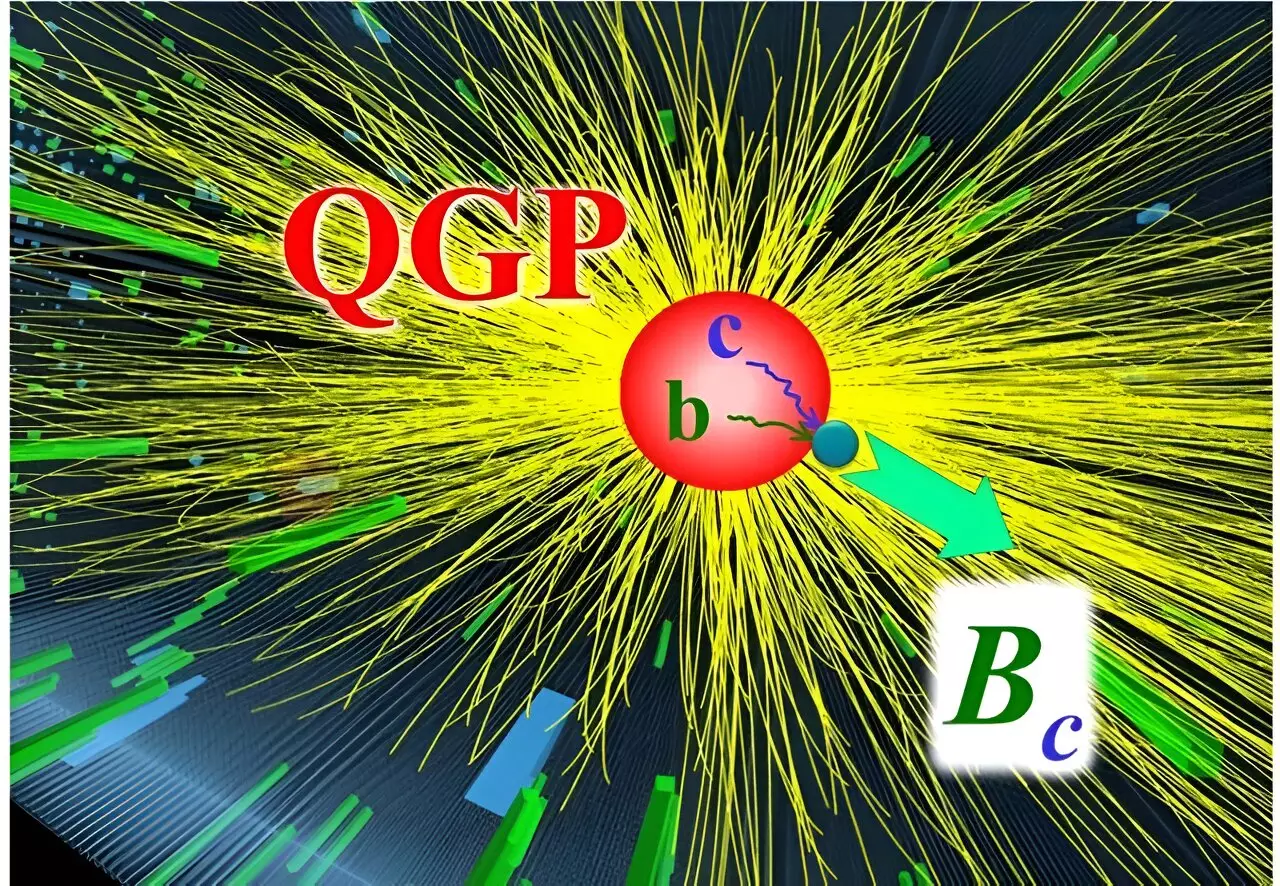A recent study conducted by researchers from the HEFTY Topical Collaboration delved into the recombination of charm and bottom quarks to form Bc mesons within the quark-gluon plasma (QGP). Through the development of a transport model, they were able to simulate the behavior of heavy-quark bound states in the expanding QGP fireball resulting from high-energy heavy-ion collisions. This innovative approach has been successful in describing the production of charm-anticharm and bottom-antibottom bound states, leading to predictions for Bc particles (charm-antibottom bound states). The findings of this research have been published in the prestigious journal Physical Review C.
High-energy heavy-ion collisions give rise to a QGP that exists for a brief period before transforming into numerous detectable particles. Researchers rely on detectors to track specific signatures emitted by various particles. To distinguish the formation of QGP in heavy-ion experiments from other collision types, such as proton-proton collisions, unique signatures are essential. Theoretical simulations were conducted to analyze the diffusion of charm and bottom quarks within the QGP, revealing that the recombination of these quarks plays a crucial role in increasing the production of Bc mesons. Unlike proton-proton collisions, this recombination mechanism serves as a distinct marker of QGP formation.
Enhanced Yield of Bc Mesons
By utilizing realistic spectra of charm and bottom quarks obtained from their diffusion in the QGP, researchers evaluated the recombination processes leading to the formation of Bc mesons. Results indicated a significant enhancement in the yield of Bc mesons during collisions involving lead (Pb) nuclei compared to proton collisions. The most pronounced effect was observed for slow-moving Bc mesons in “head-on” Pb nucleus collisions, where a substantial QGP fireball containing notable quantities of charm and bottom quarks was generated. Furthermore, theoretical calculations aligned with initial data from the CMS collaboration at the Large Hadron Collider (LHC).
While the existing data aligns with the theoretical predictions, current observations lack sensitivity towards slow-moving Bc mesons. Future data collection efforts are poised to serve as a critical test for the proposed QGP signature. Continued research in this area holds immense potential for uncovering further insights into the behavior of heavy-quark recombination within the quark-gluon plasma and its implications for understanding high-energy heavy-ion collisions.


Leave a Reply